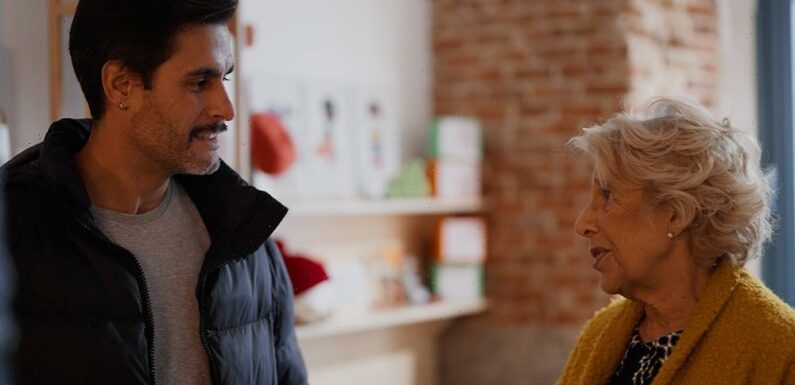
A wandering love note to Madrid directed by local filmmaker Curro Sánchez Varela, “Voices of a City” ( “Voces de una ciudad”) merges prominent aesthetics with a charismatic populace, who so often blend into the background of photos taken of the bustling metropoli.
The film is a curated 24-hour journey through each urban corner, delving into the most integral part of any locale, the humans living within its confines, serving as an immersive peek into the city’s history, culture and enduring allure.
Breezily narrated by Goya Award-winning Spanish actress Blanca Portillo (“Maixabel”), the sprawling shots of familiar architecture run alongside sharply focused studies of residents from the mayor to a famed chef, taxi drivers to artists and musicians, as well as a most charming retired couple.
Sánchez Varela has “captured and lifted the personal stories of local Madrileños going about their daily lives over the course of a 24 hour period – coming from all corners across the city….from the Gran Vía to the Rastro to the Madrid Rio…to City Hall…amongst others – and highlighted the individual contributions they add to the fabric of the city, which makes Madrid the extraordinary capitol city it is today as it builds for the future,” said James Costos, Secuoya Studios president, presenting “Voices” at an Iberseries & Platino Industria preview.
“Voices of a City” was produced by Secuoya Studios’ unscripted department, headed by Eduardo Escorial. It won out in the ethnography and society category at the 6th Terres Travel Festival – Films & Creativity 2022, held in Spain’s Tortosa. It also received a Gold Star in the TV Travel Magazine international category, awarded at the 22nd The Golden City Gate International Tourism Film competition.
After presenting the vivid documentary at Iberseries and Platino Industria last week, Varela (“Paco de Lucía: The Search”) spoke with Variety about the allure of the spaces and faces of Madrid.
The film seems to include a group so diverse that it fully represents every corner of the city. How did you choose who you’d profile in the film?
It all started with a creative ping-pong exercise between writers and directors. Each spoke unreservedly about what Madrid meant to them, sharing that vision. We talked about perceptions and personal experiences and more abstract or historical ideas.
One example: Gateways. They were important for one of the scriptwriters from Barcelona. Upon arrival, he discovered a city with a history of great gateways: the Puerta de Alcalá, Puerta de Hierro, and Puerta de Toledo. He also found a place with doors ajar, where nobody asks where you come from or where you’re going. I found that concept fascinating.
As a Madrileño, my main claim was traditional street food, which has existed since time immemorial in the Villa de Madrid. Once we finished adding hundreds and hundreds of ideas, we distilled the best ones and went on the hunt for the characters that best embodied those concepts. Those voices from a city had to be demographically balanced, of course.
Can you talk a bit about how you envisioned this film and how that vision changed as you met the people you wanted to frame in its narrative?
When we did the initial casting, we interviewed many of the characters. Those exchanges determined part of the shooting. With the retired couple that we see at the beginning, in the Almudena cemetery, we liked the energy they gave off so much that we decided to reuse them at the end, in Madrid’s night scene. Tati, the flamenco teacher, also has more prominence in the footage than we’d originally intended because we all fell in love with her.
Many people visit Madrid, eat the food and walk the streets, but most of the time they miss the most integral part, the people. Can you speak to how important it is for visitors to dig a little deeper and meet the people who live and breathe the city in its entirety every day?
A city is the sum of its people, of those who are and of those who were. In Madrid it’s difficult to find two similar people. Perhaps that’s why Madrid is a tremendously plural and diverse city, where each street or alley has its own personality and history, not to mention the most peripheral districts like Carabanchel, Vallecas and Moratalaz.
What was the most exciting thing about directing a documentary of the city in the form of a 24-hour adventure?
I believe that the weight of the narration didn’t have ups and downs. Cities typically have peaks of activity and times where that energy drops a bit. It was important that every scene portrayed something interesting for the viewer. Like Mercamadrid, which at three in the morning is a market full of buyers, full of frenzy. You realize that, if you look carefully, Madrid never sleeps and always offers collectable, vibrant moments.

Read More About:
Source: Read Full Article